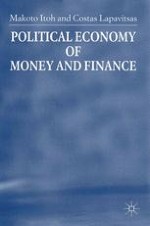
1999 | OriginalPaper | Chapter
Classical Political Economy of Money and Credit
Authors : Makoto Itoh, Costas Lapavitsas
Published in: Political Economy of Money and Finance
Publisher: Palgrave Macmillan UK
Included in: Professional Book Archive
Activate our intelligent search to find suitable subject content or patents.
Select sections of text to find matching patents with Artificial Intelligence. powered by
Select sections of text to find additional relevant content using AI-assisted search. powered by
The classical theory of money and credit is characterised by the underlying assumption that natural harmony prevails in the operations of the market economy, a harmony that extends to the realm of money and credit. Two distinct traditions can be discerned within classical theory in this respect. On the one hand the quantity theory of money (or the currency school) emphasises the harmonious equilibration of the total quantity of commodity output and the total quantity of commodity money, provided no state or other interference has taken place with the domestic and international operations of the capitalist markets. In this view money is a secondary aspect of capitalist exchange, a Veil’ on real economic activities. Credit money created by banks could upset the presumed harmony, resulting in commodity price disturbances. Thus this tradition supported the introduction of the English Bank Act of 1844 in the hope that the tight quantitative regulation of credit money created by the Bank of England would eradicate capitalist market disturbances.